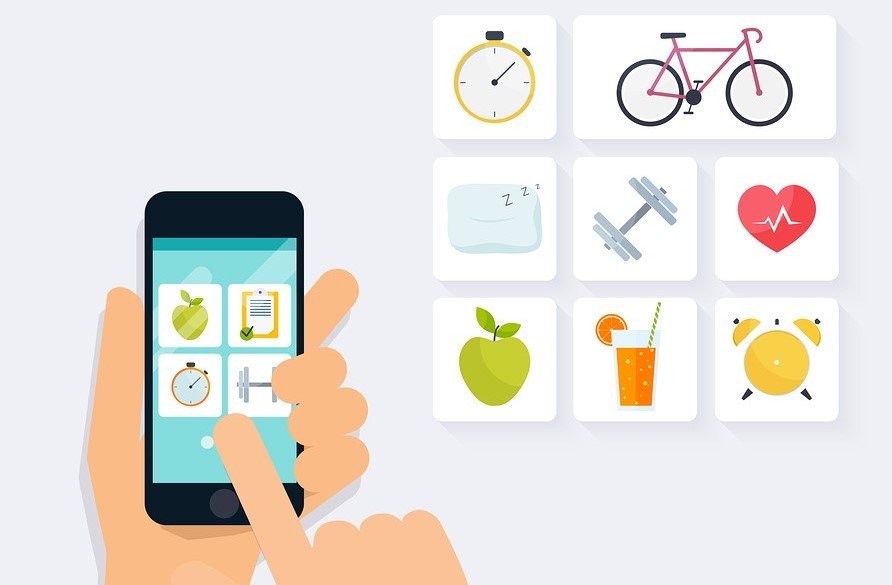The odds are in your favor. Studies have shown that people who track their food intake and exercise are more likely to lose weight and keep it off. It provides priceless insight into current habits, areas for improvement and helps achieve progress over time. This is why it works:

Download On Track with Barix: Will Food and Exercise Tracking Actually Help Me Reach My Goals?
Tracking brings awareness.
Most of us do a lot of mindless munching. Without monitoring, it is difficult to recall what we ate even the previous day – go ahead…try it right now. Do you know how many days you reached your step goal in the last month or made it to the gym? It’s easy to see how tracking helps keep us aware of what we eat and how much we move.
Understanding.
We often select foods that we think are “pretty healthy,” only to discover they are higher in calories or added sugar than we realized. Tracking gives us a better understanding of the nutrition content of individual foods and how those can work together to help reach specific goals.
Control.
Tracking may provide a “pause button,” enabling us to make more deliberate food choices. When confronted with tempting, highly processed food, it can be easier to select a more rational option to meet your goals. Food choices become based on taste, availability, and how they will impact the goals you’ve set up.
Measurements.
Tracking gives you actual numbers to work with. Calories, protein, number of steps, vegetable servings, water intake, consistency of supplements, whichever numbers are essential to you, tracking gives them to you. In place of a vague, “my portions seem to be larger,” you’ll have concrete numbers to work with.
Real Numbers.
The nutritionists have calculations that can estimate calorie needs, but each person has an individual caloric requirement. It can vary based on:
- The number of diets previously attempted – the cycle of weight loss followed by weight gain often leads to a change in body composition and a lowered metabolic rate.
- The amount of movement in a day – this includes intentional exercise and activities of daily living.
- Other factors, such as age, genetic, medical conditions, and medications.
Accountability.
During times of stress, you may resort to more highly processed foods and foods with added sugar. Calories may creep up. Tracking allows you to see how shifts in your intake and lifestyle over time impact your weight and may help you get back on track sooner.
Reality Check.
A portion of almonds is 24 nuts, but if you’ve allotted 100 calories for a snack, 15 nuts are your personal portion size. Even after weight loss surgery, portion distortion is a real thing. Food packaging, restaurant meal size, and societal norms require that we stay vigilant to keep portions small.
Motivation.
Tracking steps, squats, the number of yoga classes, or any other exercise goal gives you a sense of accomplishment and encourages you to do more. Ditto with hitting food goals – the more milestones you reach, the more motivated you become to keep going.
Use these tips to establish a successful tracking habit if you’re ready to give tracking a chance.
What to Track
First things first, decide what to track. You’ll want to be sure to record the information that is most helpful to you personally.

- Food intake should include a minimum of calories, protein, and ounces of fluid. You could also record feelings, level of hunger, servings of vegetables, fiber, time of meals/snacks, or other essential factors.
- Exercise logging should minimally include a measurement such as steps per day, minutes of aerobic exercise, or the number of classes. It could also include the amount of weight and reps used for strength training exercises, the number of sit-ups, etc.
- Food and emotions can be tightly intertwined. Learning to “feel through” emotional situations rather than numbing with food is an important skill to develop. Recording your feelings can help you to identify some of the emotions that you’re experiencing. For example, if you feel that you really need some chocolate, ask yourself what you are feeling at the moment. You may find stress, anger, loneliness, sadness, joy, or other feelings that may best be resolved in another way.
- Full-length pictures help document your weight loss journey and can often capture the changes occurring before you do.
- Weight is significant to track; just don’t become a slave to the scale. Once a week or at the most, once a day will help document your loss.
- Measurements of arms, waist, thighs, and hips can often change even when the scale is stuck and provide motivation during a plateau. You can also include:
- The number of medications you have been able to discontinue
- Improvements in blood sugar levels,
- Lowered blood pressure
- Your energy level (on a scale of 1-10)
How to Track
Next, find a format that works for you. Are you a pad of paper and pen tracker? There’s nothing wrong with that—sometimes the simpler, the better. Some prefer a little more structure in the way of a spreadsheet or log form. Free websites or apps are available, and many find these easy to use. These may have the advantage of syncing with your fitness tracker.
How often will you update your tracker? There are undoubtedly several options, and it’s crucial to find the one that works best for you. No matter what frequency you select, it’s important to record everything you eat, even those splurges you’d rather not record.
- One option is to plan and record your meals and snacks a week in advance. Update any variances daily. An advantage to this method is that you can have the nutrition information in advance, allowing you to make adjustments to the plan that better meet your nutrition goals. You can also schedule exercise for your week.
- You may want to update your tracker daily—setting up an end-of-day routine to record your intake and exercise. This works well for those who are reasonably routine and have good memories. Keep in mind that it’s not easy for many of us to remember every bite throughout the day, so you may sacrifice some level of accuracy by using this method.
- Recording as you go works well for many people. Right before or after eating, record intake and track exercise as you go. This method allows for adjustments throughout the day based upon intake and output so far. It is also the most accurate way to record food intake.
Tips for Tracking
Be accurate with portions. Measure portions regularly at first and then on occasion. The tendency is to underestimate portion size, and that can skew food tracking significantly.
Include the extras. The mayo on your sandwich, the cube of cheese, a handful of nuts—all adds up. Even 100 extra calories a day can slow weight loss or start weight gain.
Don’t feel the need to be perfect. There is no perfect eating and exercise plan. Don’t let the fear of not being good enough stop you from starting tracking. If you slip up, pick up where you left off.
It gets easier over time. There can be a bit of a learning curve to tracking, but the more you do it, the easier it gets. Once you have it set up and have formed a habit, you’ll find that it takes very little time – about 15 minutes a day.
Something is better than nothing. If you can track food and exercise right off the bat, start with one. If you can just spot-check your progress once a week, start there. Establishing a tracking discipline and seeing the benefits can inspire you to expand your efforts.
Review, Reflect and Adjust
Take time once a week to review your logs—reflection is an important piece. If you’re unsure what you should or could do differently, don’t hesitate to share your record with your Barix Nutritionist for feedback.

